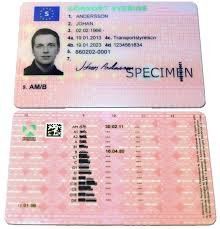10 Failing Answers To Common Road Crossing Photo Traffic Authority Que…
페이지 정보
작성자 Dedra 작성일 25-03-05 22:04 조회 4 댓글 0본문
 Road Crossing Photo Traffic Authority
Road Crossing Photo Traffic AuthorityRoad crossing photo traffic authority is a powerful tool that neighborhoods can release at intersections in high-risk locations to improve safety for everybody. To use photo enforcement, an intersection needs to have a stop line or crosswalk and be found in a highway work zone, school crossing zone or high-risk crossway section.
Pedestrians
 A pedestrian's safest location to cross a road is at a significant crossing or crossway. In addition, the Governor's Highway Safety Association reports that pedestrians are usually killed by drivers who are turning left or crossing the street at night. The association advises pedestrians avoid strolling on roadways with rush hour.
A pedestrian's safest location to cross a road is at a significant crossing or crossway. In addition, the Governor's Highway Safety Association reports that pedestrians are usually killed by drivers who are turning left or crossing the street at night. The association advises pedestrians avoid strolling on roadways with rush hour.Pedestrians must always wear brilliant visible clothes when out strolling on streets, pathways or shared courses (areas designated for pedestrian and bicycle usage). They must also look both methods before stepping onto the street and ensure vehicles have stopped before they cross. If you're utilizing a wheelchair or nytt körkort borås trafikverket borås (to clashofcryptos.trade) movement scooter, make sure the wheels are locked to avoid it from rolling into the street.
When walking on a road, pedestrians must remain as near the sidewalk as possible to enable easy access to stores and buildings. When there's no walkway, walk on the best side facing traffic to make sure cars can see you. If you're strolling in front of a store, raise your hand when you enter and exit to signal drivers to your presence.
Even when utilizing a significant crosswalk or crossway, you need to still look both methods before crossing the street. Drivers may be sidetracked, particularly if they're using a phone or listening to music. Likewise, a car's turn signal might be flashing, but if the driver hasn't inspected to see whether there are any pedestrians in his lane or on the other side of the street, he can unintentionally develop into them and strike them.
Some roads are unsafe for pedestrians, consisting of arterial roads that link city centers to freeways and expressways. These routes have numerous lanes and a range of speeds, making it hard for drivers to expect pedestrians. Likewise, larger cars such as buses, trucks and SUVs block pedestrians' view of the highway.
Pedestrians need to never stroll on limited-access roads or their entrance or off ramp, and they need to be extremely mindful when strolling around a roundabout. Pedestrians can safely cross roundabouts by utilizing one of the splitter islands in between the two various instructions of traffic. If you're unsure of how to safely cross, ask the local cops department for advice. FHWA is working to enhance pedestrian crossings through STEP Studio, a tool kit that offers a variety of countermeasures for specific locations and conditions.
Pedestrian Signals
Pedestrian signals different pedestrians from traffic and manage their crossing of hectic crossways. The signals are activated by a pedestrian pressing a button that places a call into the signal controller. The signal controller then cycles through the phasing series to reach the proper stage for the pedestrians' needs.
Generally, the very first time the pedestrian signal cycled through its series, it would display the WALK or strolling individual sign and remain on for at least four to 7 seconds. During this time, pedestrians are permitted to leave the curb and start their crossing. The WALK indicator should be constant and visible to all pedestrians, including those with vision problems.
In addition, the signal might include a countdown timer that displays the number of seconds staying in the flashing DON'T WALK interval for completing the crossing. Some blind and aesthetically impaired people feel that this information is unneeded due to the fact that it can hinder their ability to hear approaching vehicles.
The signal might likewise be set up for special pedestrian phasing, which enables pedestrians to cross only when there is no or extremely little car traffic. This is advantageous to some pedestrians who have mobility or cognitive impairments. Special pedestrian phasing is only possible at particular times of the day and night, though, and can just be implemented in specific places.
Some pedestrian signals are integrated with the automobile traffic signal system to offer collaborated operations. Pedestrians need to watch out for this because there is the capacity for a confused signal and a harmful circumstance that could cause an uncontrolled crossing.
To be safe, a pedestrian ought to always listen to the APS and traffic, particularly preliminary parallel automobile motions, to ensure that their directional walk indicator (On Your Mark!) and/or speech walking individual signal connects to the traffic situation. It is also a great idea to discover the location of the tactile arrow on the APS and verify that it is pointing in the instructions of the designated location street. This will assist the pedestrian to get into position and line up with the ADA-required flat face on the pushbutton, and to preserve positioning during their crossing.
Traffic Control Devices
Traffic control devices help keep the flow of traffic moving at intersections and other key areas. They consist of signal lights, electronic message boards, traffic signs and barriers. In addition, they can consist of warnings and nytt körkort trafikverket assistance signs that assistance drivers remain safe. For instance, an indication may alert drivers of upcoming pedestrian crossings or construction zones, Nytt körkort Trafikverket assisting to avoid high-speed mishaps.
A signal light is an important tool for managing the flow of traffic at crossways, where cars originate from different instructions and need to be combined. They utilize green, yellow and red lights to direct drivers and pedestrians. They can likewise feature flashing lights or trafikverket borås körkortförnyelse a bell to caution pedestrians of the existence of incoming vehicles.
Advanced innovation is making traffic control devices more reliable, with clever systems that change in genuine time based on road conditions. These systems minimize congestion and improve safety by allowing pedestrians to cross the road before traffic resumes.
These systems use sensors to spot pedestrians and trigger the traffic signals at the proper time. They are created to provide top priority to pedestrians, emergency and mass transit automobiles. They are often found at airport runways and other busy intersections.
For example, in Perth, Australia, a device called the "Keywalk" allows handicapped people to extend the walk phase of a traffic signal. This system was developed in action to issues of impairment advocates who wanted handicapped individuals to be able to cross the highway safely.
While these gadgets are not as apparent as traffic lights, they are just as essential to road safety. Without them, drivers and pedestrians could get hurt by irregular driving or other dangers.
The Manual on Uniform Traffic Control Devices (MUTCD) offers the standards used by road supervisors across the country to install and preserve traffic control gadgets. It is upgraded routinely to show new advancements in the field. Staying up to date with the MUTCD can be tough, but it is crucial to the success of traffic management. The MUTCD News Feed offers Interim Approvals, Official Interpretations, Policy Statements and Federal Register notifications for road managers. It can be accessed online, and it can be registered for so that you get updates instantly.
- 이전글 Why Nobody Cares About Situs Gotogel
- 다음글 The 10 Most Scariest Things About Patio Doors Locks Replacement
댓글목록 0
등록된 댓글이 없습니다.
